The best cardio strategies for perimenopause
Sharing my thoughts on cardio during perimenopause the best cardio strategies.
Hi friends! How are you? I hope that your morning is off to a great start! How was the weekend? We went to my brother’s wedding, which was gorgeous and wonderful (I’ll share pics in Friday Faves!), and just enjoyed a low-key weekend. I caught up on some spring cleaning and enjoying the beautiful weather outside.
For today’s post, I wanted to chat a little bit about cardio. I feel like there’s SO MUCH cardio *noise* right now.
“Stop doing all cardio! Just walk.”
“Cardio messes up your hormones!”
“HIIT is the devil!”
The reality is that cardio is good… it’s healthy for your heart, ya know… but you just have to be strategic about the type of cardio you’re doing, where you are in your health journey, and how often you’re doing it. A big factor is perimenopause and things changing over time.
A quick lil refresher: perimenopause is the 8-10 years before menopause (where you have no cycle for 12 consecutive months) and hormone levels start to change. I don’t think I’m quite there yet – I turned 40 in November – but I know it’s around the corner and that many of my reader friends are in this sweet spot.
During perimenopause, it’s common to notice changes in energy levels, recovery time, and how our bodies respond to different types of exercise. Strength training remains the most important form of exercise during this phase, because it helps to preserve lean muscle mass, support bone density, and keep metabolism revved up. However, cardio still plays an essential role – it just might need to look a little different than it did in our 20s and 30s.
I think we can all remember the time when hours of high-intensity cardio were our life. I’d take multiple aerobic classes in a row, or spend hours on a Starclimber with a text book propped up. My hormones were also a mess. THANK THE LORD these days are over.
During perimenopause, I think it’s important to be strategic, focusing on movement that supports hormonal balance, stress management, and longevity while keeping inflammation in check. I wanted to chat about the best cardio strategies to incorporate into your routine during this transitional phase. *As always, talk to a doctor before making any fitness changes.*
The Best Cardio Strategies for Perimenopause
1. Walking & Hiking: Gentle But Effective
Walking is one of the most underrated forms of cardio, and during perimenopause, it’s a gamechanger. It helps manage stress, supports cardiovascular health, and keeps cortisol (our stress hormone) from spiking too high.
Aim for 8,000-10,000 steps per day as a general goal. If that goal seems impossible, see where your baseline is, and try to add 1,000 steps every few days until you hit your goal.
Try hiking or incline walking to increase intensity while keeping it joint-friendly.
Walking outdoors also boosts mood and supports circadian rhythm regulation, improving sleep quality. It’s a great way to support overall function and movement.
2. Interval Pushes: Short Bursts of Intensity
While long HIIT sessions may not be as beneficial during perimenopause due to their impact on stress hormones, short, controlled bursts of intensity can be a great way to boost cardiovascular fitness without overtaxing the system.
Try this: During a walk or cycling session, add 30-60 seconds of a faster pace or incline, then recover for 1-2 minutes and repeat for 5-8 rounds.
Hill sprints, stair climbs, or cycling sprints are excellent options.
Focus on quality over quantity – I would do 2-3 sessions per week, max.
3. Zone 2 Cardio: Building an Endurance Base
Zone 2 cardio refers to maintaining a moderate effort level, where you can still hold a conversation but feel slightly challenged. This type of cardio helps improve metabolic flexibility, mitochondrial health, and endurance – all essential during perimenopause. Check out my post all about Zone 2 cardio here.
Examples: Brisk walking, easy cycling, rowing, or light jogging.
Aim for 45-60 minutes, 2-3 times per week.
Keeping it at a lower intensity prevents excess stress while still providing heart-healthy benefits.
4. Strength Training Circuits with Cardio Bursts
Since strength training is crucial in perimenopause, combining it with short cardio bursts can maximize efficiency and keep workouts engaging.
Structure your workout with compound strength movements (squats, deadlifts, presses) followed by 30 seconds of cardio (jump rope, rowing, or step-ups).
This method keeps heart rate elevated while still prioritizing muscle-building.
5. Dance or Low-Impact Cardio
For those who don’t love traditional cardio, finding ways to move that feel fun is key. Dance workouts, rebounding (mini trampoline), or swimming are excellent options that keep the body moving without excess strain on the joints.
Try a dance cardio session for 20-30 minutes a couple of times per week. My favorite is Sculpt Society! You can use this link to try it for freeeeee.
Rebounding is great for lymphatic drainage and joint-friendly cardio. All about rebounding here.
Swimming can be soothing for achy joints while still providing a full-body workout.
Creating a Balanced Cardio Plan in Perimenopause
A well-rounded approach ensures you’re getting the benefits of cardiovascular training without overloading your body.
Here’s a sample weekly schedule:
Monday: Strength Training + Short Interval Pushes (e.g., incline walk sprints)
Tuesday: Zone 2 Cardio (brisk walk, cycling, or light jog for 45 minutes)
Wednesday: Strength Training + Low-Impact Cardio (dance or swimming)
Thursday: Rest or Gentle Walk
Friday: Strength Training + Short Cardio Burst Circuit
Saturday: Hiking or a Longer Zone 2 Cardio Session
Sunday: Rest or Leisurely Movement (yoga, stretching, walking)
So, tell me, friend: what’s your favorite way to get cardio in these days? How often do you incorporate cardio or walking workouts? I try to walk every day and my walking pad is the only way I hit my step goal.
xo
Gina
Workouts I love that you can try for free

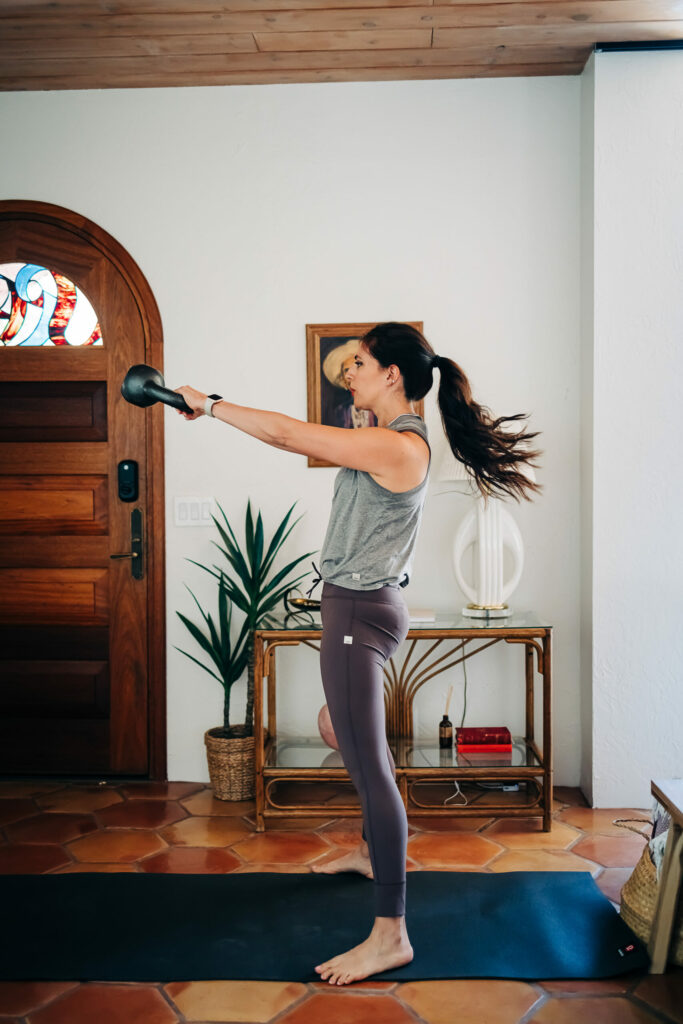

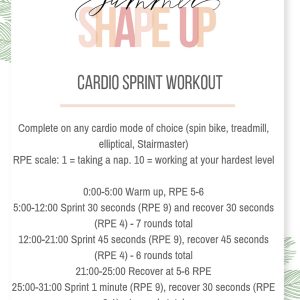
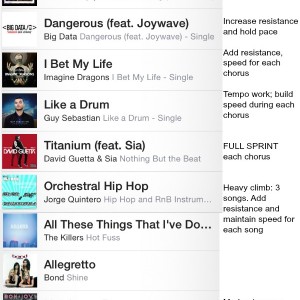
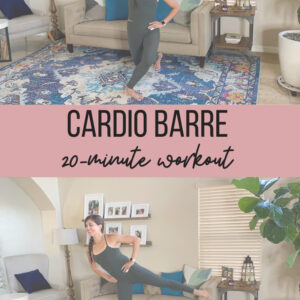

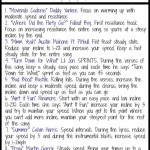
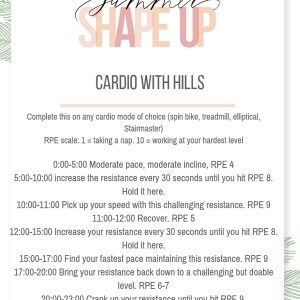
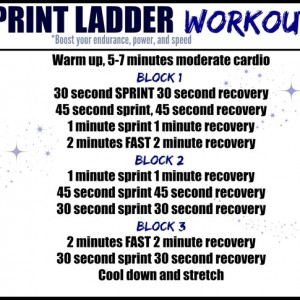








I am really struggling with perimenopause. Are there any supplements you suggest during this time?
I would recommend functional testing – that way you can see what’s going on with your hormones, nutrient deficiencies, gut health, thyroid, cortisol, etc, and get a personalized action plan!